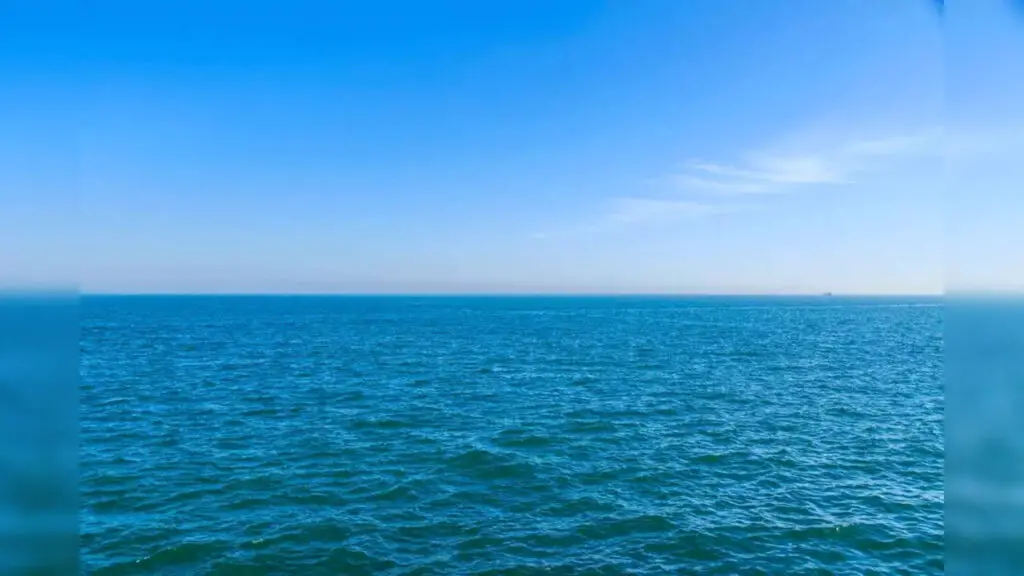The Science Behind the Many Hues of the Ocean
The ocean is a vast and mysterious body of water, and one of the most striking features of the ocean is its beautiful blue color. But have you ever wondered why the ocean appears blue, and why it sometimes displays a range of other colors? In this article, we will delve into the scientific reasons behind the mesmerizing hues of the ocean and explore the role of sunlight, water depth, and the composition of the ocean floor.
Is the Ocean Blue in Colour? Not Exactly.
Contrary to popular belief, the water of the ocean is actually clear, as explained by NASA oceanographer Gene Carl Feldman. The color of the ocean’s surface is predominantly influenced by factors such as depth, its contents, and what lies beneath it. So, even though the ocean may appear blue, it is, in fact, clear.
Why Does the Ocean Appear Blue?
A glass of water looks clear because visible light passes through it with minimal obstruction. However, when a body of water is deep enough that light isn’t reflected off the bottom, it appears blue. Sunlight consists of a spectrum of different wavelengths, with shorter wavelengths appearing as blue and green light. When sunlight interacts with water molecules, shorter wavelengths are more likely to scatter, making the ocean surface appear blue, while longer wavelengths are absorbed near the surface.
Factors Affecting the Colour of the Ocean
The depth and composition of the ocean floor play a crucial role in determining the ocean’s color. If the ocean floor is adorned with white sand or rocks, the water takes on a beautiful turquoise hue. Light hits the seafloor and bounces back up, reflecting and projecting the stunning light blue color. However, most of the ocean appears dark navy blue or completely dark due to limited light penetration beyond 656 feet.
Phytoplankton, microscopic plants using chlorophyll to capture sunlight for photosynthesis, also affect the color of oceans. While most phytoplankton give water a green tint, some contribute yellow, reddish, or brown hues. Oceans with high concentrations of phytoplankton can appear blue-green or green, depending on density. However, an excess of phytoplankton, fueled by pollution, can be detrimental, depleting oxygen and disrupting the ocean’s delicate balance.
Understanding the Significance
By understanding the dynamic interplay of physics, biology, and environmental factors that influence the color of the ocean, we not only deepen our awe of nature but also gain insight into the health of our planet. The color of the ocean serves as an indicator of its health, reflecting the presence of phytoplankton, suspended sediment, or contaminants. Monitoring these colors helps oceanographers understand the state of the ecosystem and detect potential issues, such as pollution or oxygen depletion.
Frequently Asked Questions
Q1. Is the ocean naturally blue?
A: No, the water of the ocean is clear. The apparent blue color is a result of sunlight interacting with water molecules, causing shorter wavelengths to scatter and make the ocean surface appear blue.
Q2. Why does ocean color vary in different locations?
A: Ocean color is influenced by factors such as water depth, the composition of the ocean floor, and the presence of substances like phytoplankton or pollutants. These elements contribute to the diverse hues observed around the world.
Q3. How does the depth of the ocean affect its color?
A: The depth of the ocean plays a crucial role in determining its color. In regions with white sand or rocks on the ocean floor, light hitting the seafloor reflects back, creating a beautiful turquoise hue. Deeper ocean areas often appear dark navy blue due to limited light penetration.
Q4. Why is the color of the ocean important for understanding its health?
A: Ocean color serves as an indicator of the ocean’s health, reflecting the presence of phytoplankton, suspended sediment, or contaminants. Monitoring these colors helps oceanographers understand the state of the ecosystem and detect potential issues, such as pollution or oxygen depletion.
Q5. How does climate change impact ocean color?
A: Climate change contributes to the depletion of oxygen in ocean zones, leading to phytoplankton blooms. While phytoplankton are vital to the ocean’s ecosystem, excessive blooms, fueled by pollution, can disrupt the balance, deplete oxygen, and affect overall ocean health.
In conclusion, the colors of the ocean are a complex and fascinating interplay of various scientific and environmental factors. By unraveling these intricacies, we gain a deeper understanding of our planet and the delicate balance of its ecosystems.
Source link

